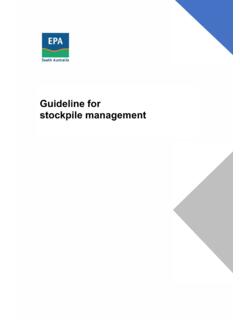Transcription of Note for Guidance on Limitations to the use of ... - Europa
1 The European Agency for the Evaluation of Medicinal ProductsEvaluation of Medicines for Human Use7 W estferry Circus, Canary W harf, London, E14 4HB, UKTel. (44-20) 74 18 84 00 Fax (44-20) 74 18 85 95E-mail: 2001 Reproduction and/or distribution of this document is authorised for non commercial purposes only provided the EMEA is acknowledgedLondon, 29 March 2001 CPMP/QWP/159/01 EMEA/CVMP/271/01 COMMITTEE FOR PROPRIETARY MEDICINAL PRODUCTS (CPMP)COMMITTEE FOR VETERINARY MEDICINAL PRODUCTS (CVMP)NOTE FOR Guidance ON Limitations TO THE USE OFETHYLENE OXIDE IN THE MANUFACTURE OF MEDICINALPRODUCTSDISCUSSION IN THE QUALITY WORKING PARTY (QWP)June, October 2000,January 2001 TRANSMISSION TO THE CPMP/CVMPM arch 2001 ADOPTION BY CPMP/CVMPM arch 2001 DATEFORCOMINGINTOOPERATIONA pril 2001 CPMP/QW P/159/01 EMEA/CVMP/271/01 EMEA 20011/2 NOTE FOR Guidance ON Limitations TO THE USE OF ETHYLENEOXIDE IN THE MANUFACTURE OF MEDICINAL PRODUCTSThis note for Guidance deals with the use of ethylene oxide in pharmaceutical raw materials,finished products and BACKGROUNDE thylene oxide is a substance which, due to its structure, is counted among the very reactivecompounds.
2 This reactivity also includes organic structures within cells and cell nuclei. In thiscase, alkylation and reactions with DNA, RNA and proteins occur. Cytotoxicity,carcinogenicity and mutagenicity of ethylene oxide, which have been demonstrated by many invitro and in vivo tests, are attributed to these data from many sources indicates that workers exposed to ethylene oxide attheir work place had an increased incidence of leukaemia and other view of the known positive potential of ethylene oxide for genotoxic carcinogenicity, it isrecommended that use is acceptable only when pharmaceutically absolutely necessary, and thenresidual ethylene oxide in the product should not exceed alimit of 1 ppm.
3 This limit is based onthe current limit of detection for ethylene oxide deviation upwards from this limit must be justified with supporting data and defended,taking into account the clinical risk/benefit assessment for the particular products OF USE OF ETHYLENE OXIDEE thylene oxide is used in the synthesis of pharmaceutical raw materials and as a sterilant. Sinceit is effective only as a surface sterilant it should be used only when justified and validated onan individual oxide sterilisation should be used only where safer alternatives cannot be used. Forcontainers filled with aqueous products, pre-filled syringes, the need for a justification forthe use of ethylene oxide in the sterilisation of the container prior to filling can be waivedprovided the container itself fulfills the specification listed under as the degradation kineticsof ethylene oxide in an aqueous medium have been sufficiently PROCEDURESDue to the above mentioned considerations, the limits are fixed on a mass/mass basis and noton a daily intake basis.
4 If no official test procedure ( Pharmacopoeia) is available avalidated test procedure must be proposed by the applicant (see also note for Guidance onValidation of Analytical Procedures: Methodology). materialsSpecification:Ethylene oxide: 1 g/gEthylene chlorhydrin (or any other halogenated ethylenehydrine): 50 P/159/01 EMEA/CVMP/271/01 EMEA 20012 productIf the residual ethylene oxide originates from its use in the raw starting material, its contentmust be limited in the raw starting (when used on the finished product):Ethylene oxide: 1 g/gEthylene chlorhydrin (or any other halogenated ethylenehydrine): 50 (based on simulated use):Ethylene oxide: 1 g/ml (container volume)Ethylene chlorhydrin (or any other halogenated ethylenehydrine): 50 g/ml (container volume).












